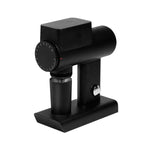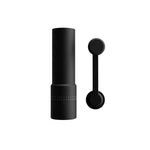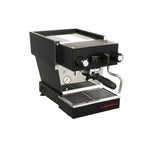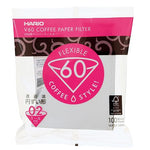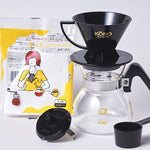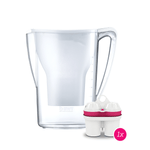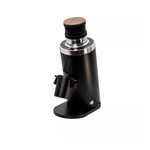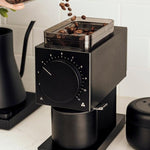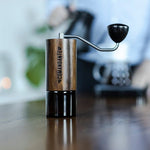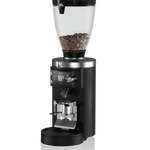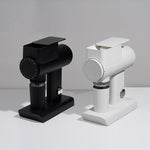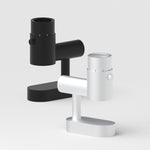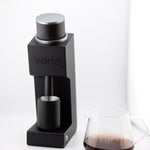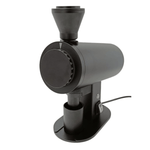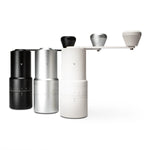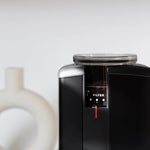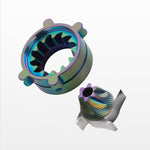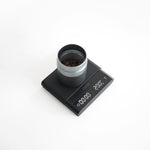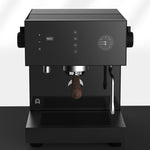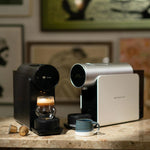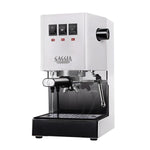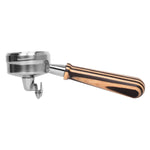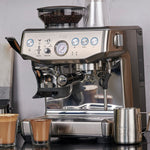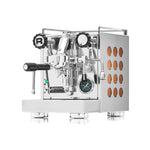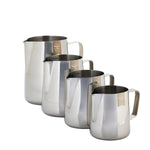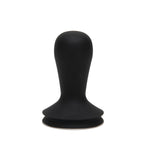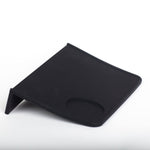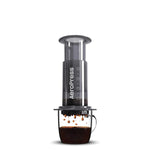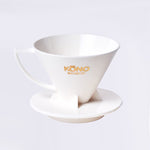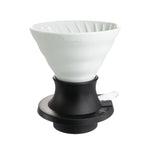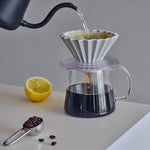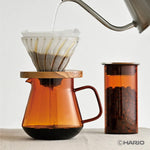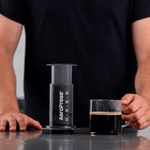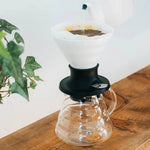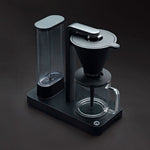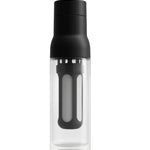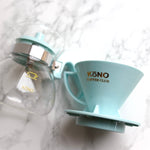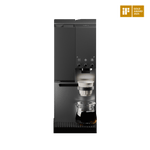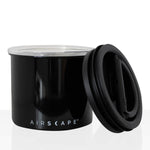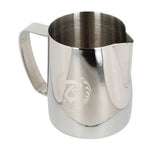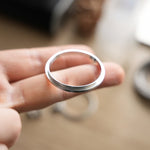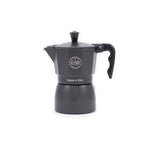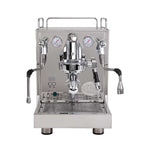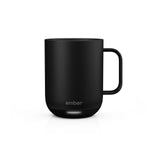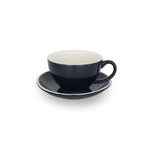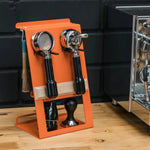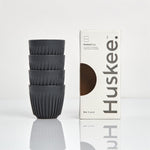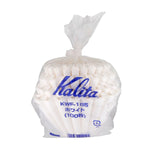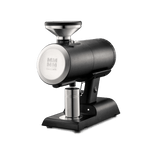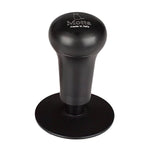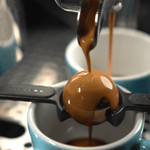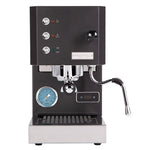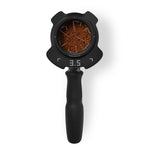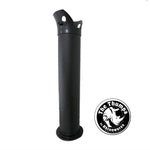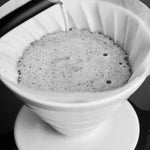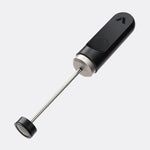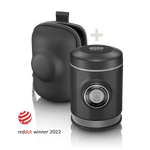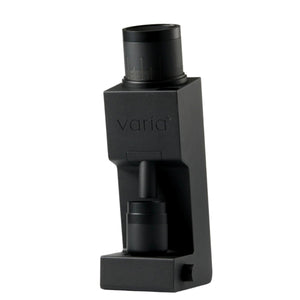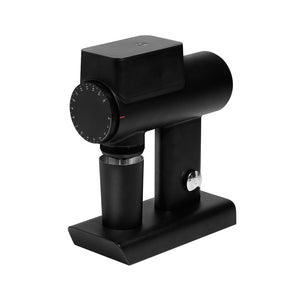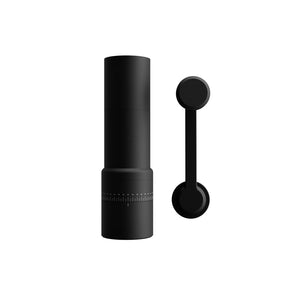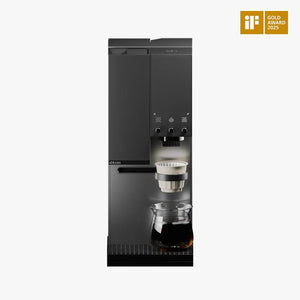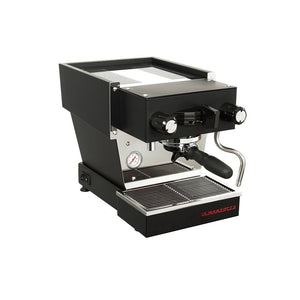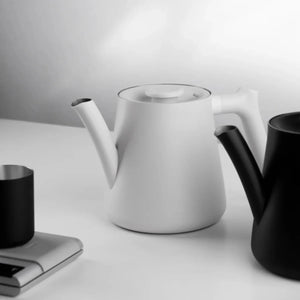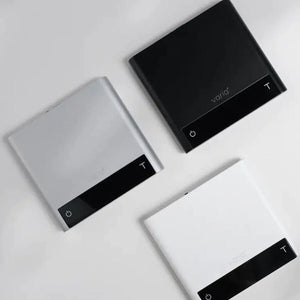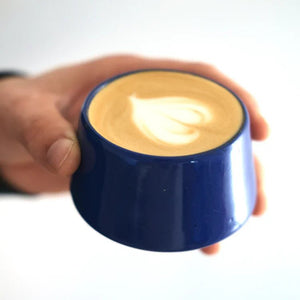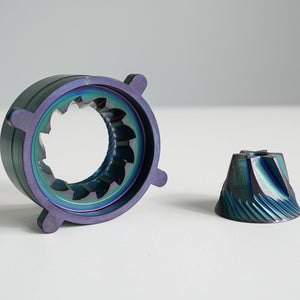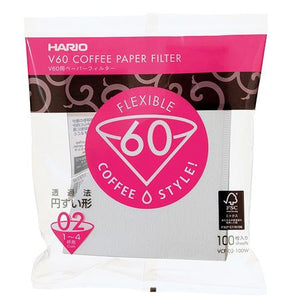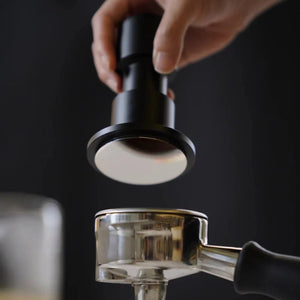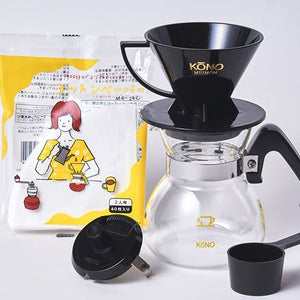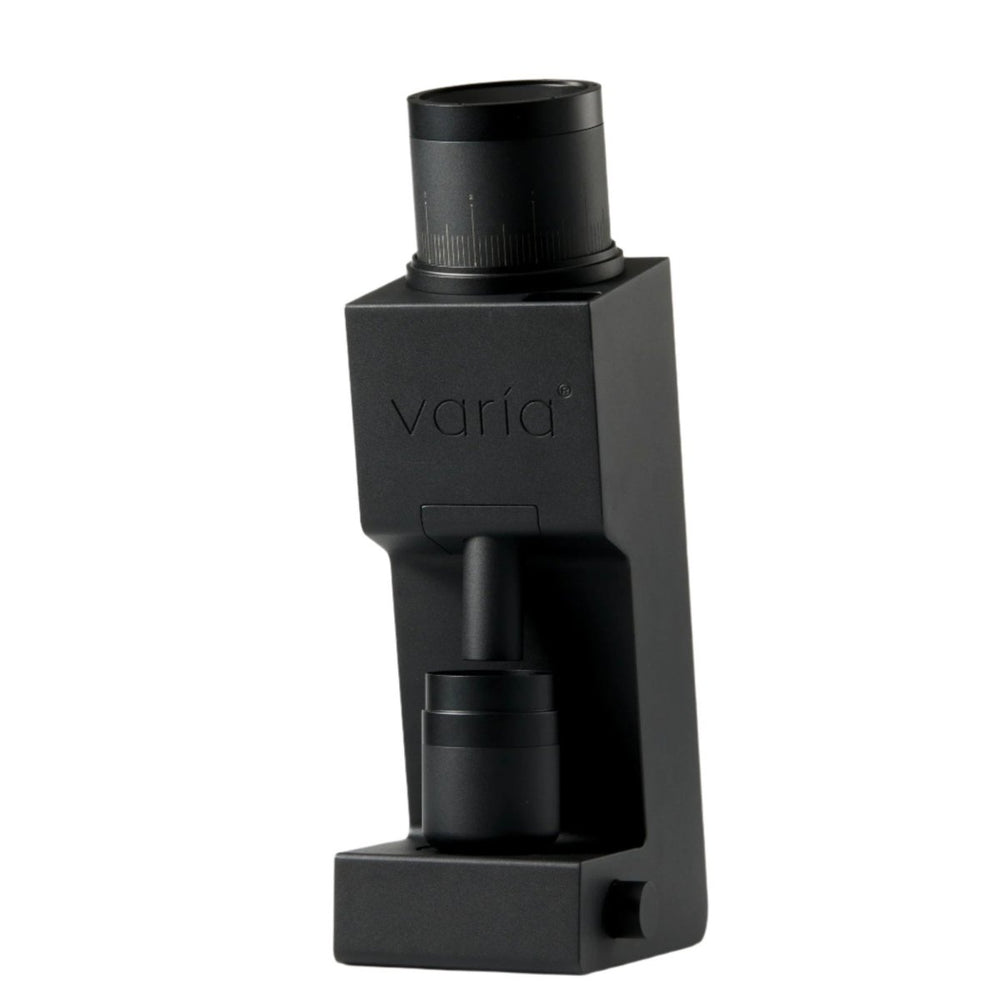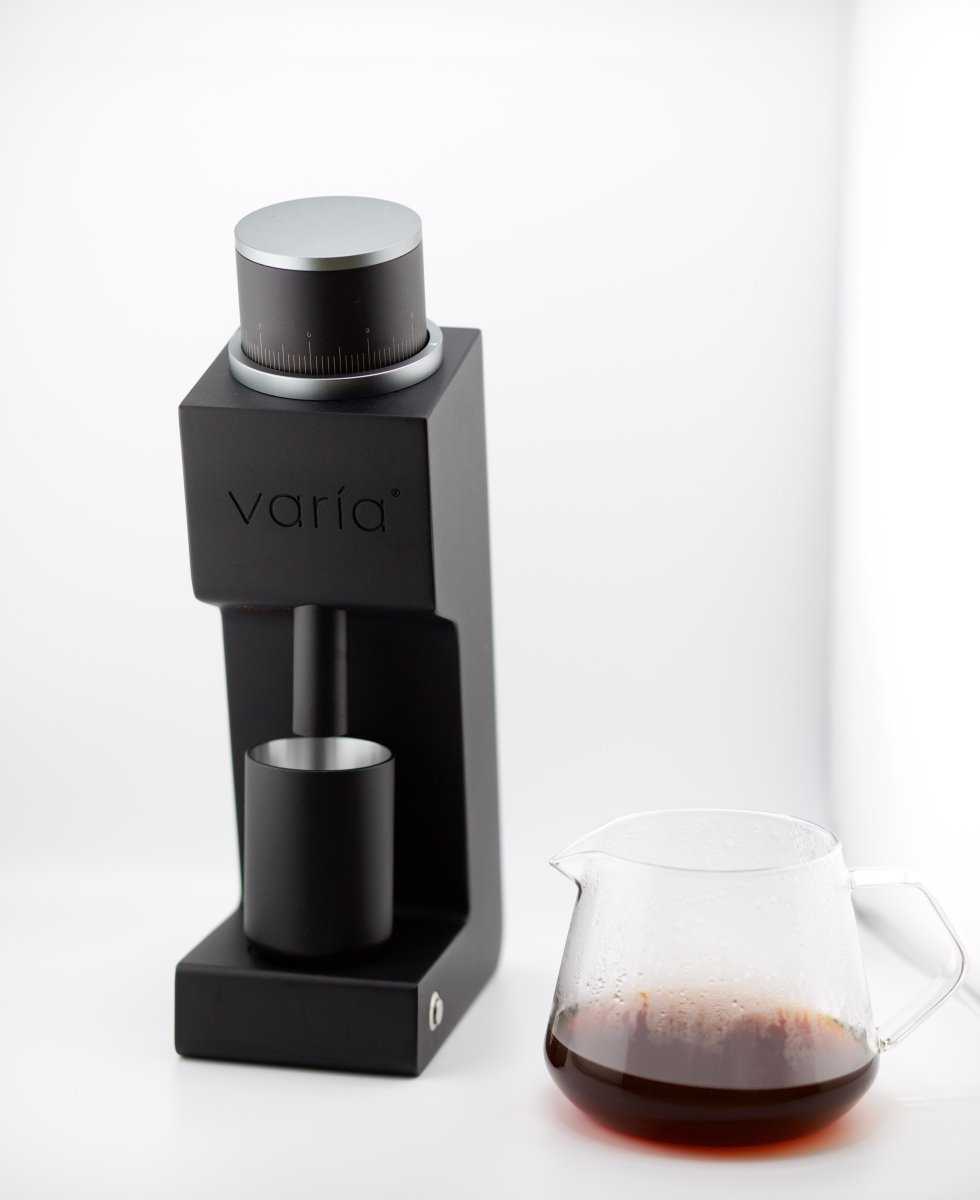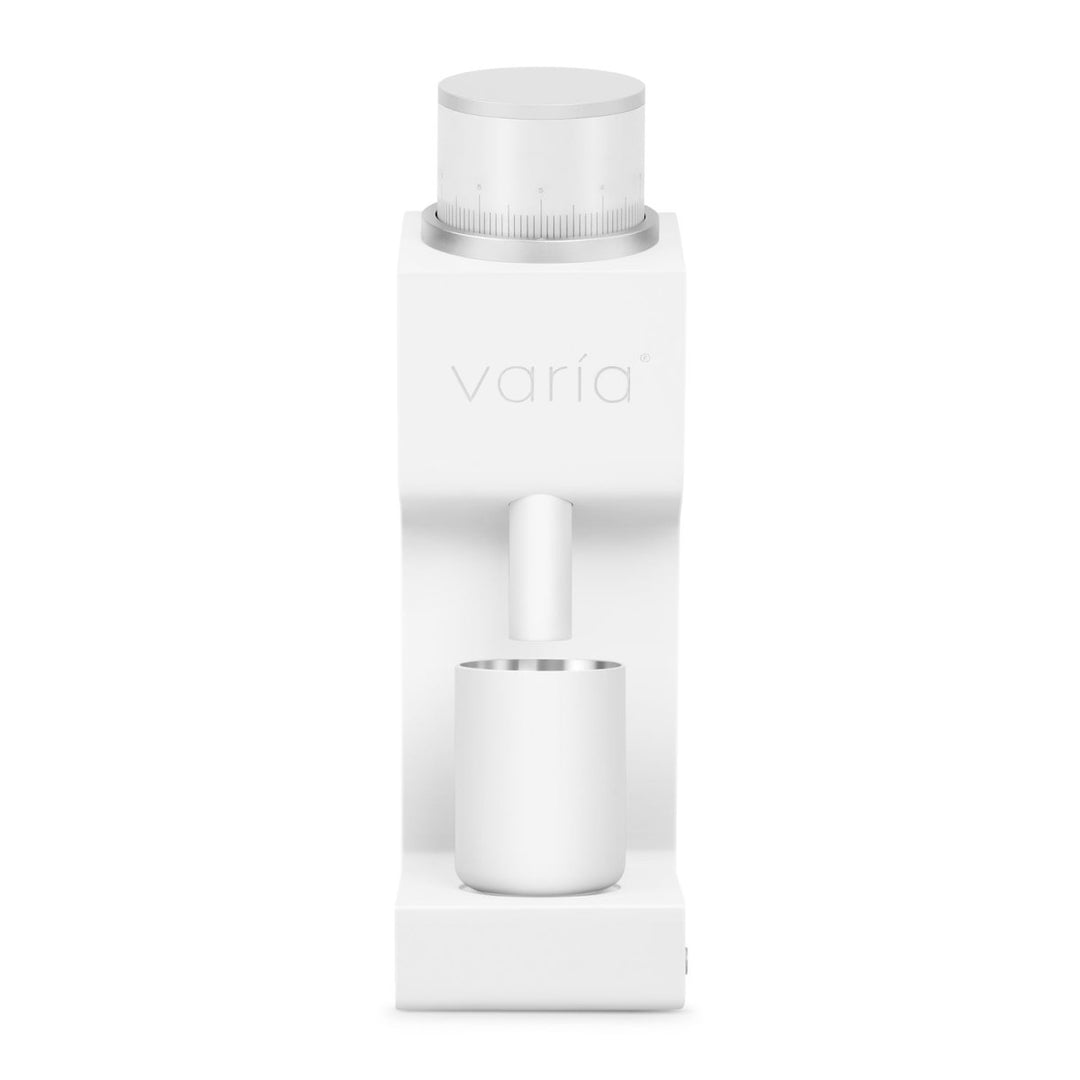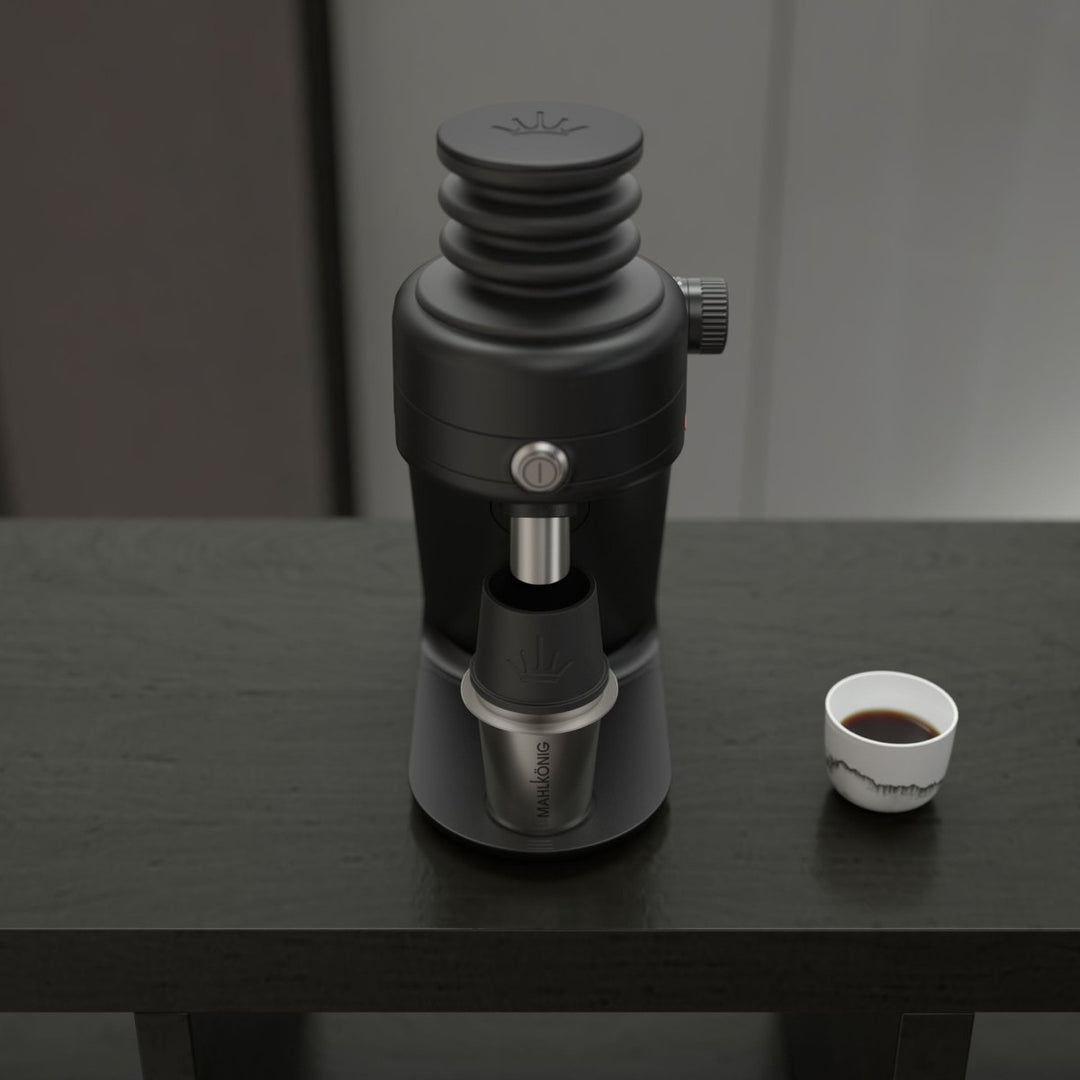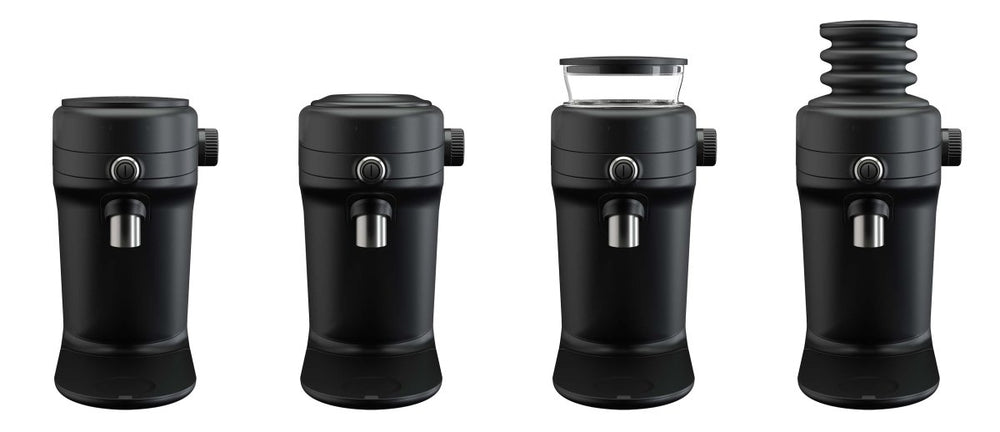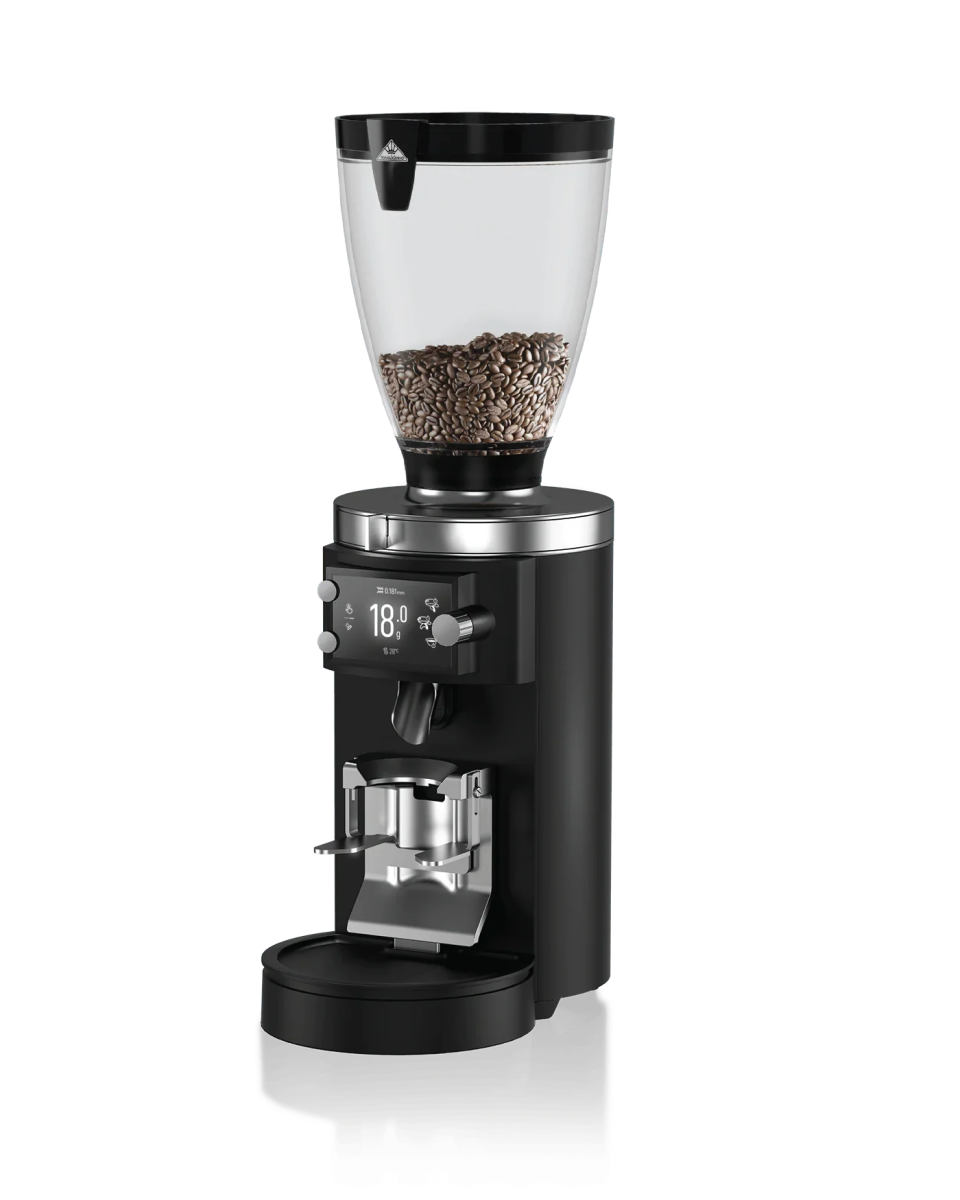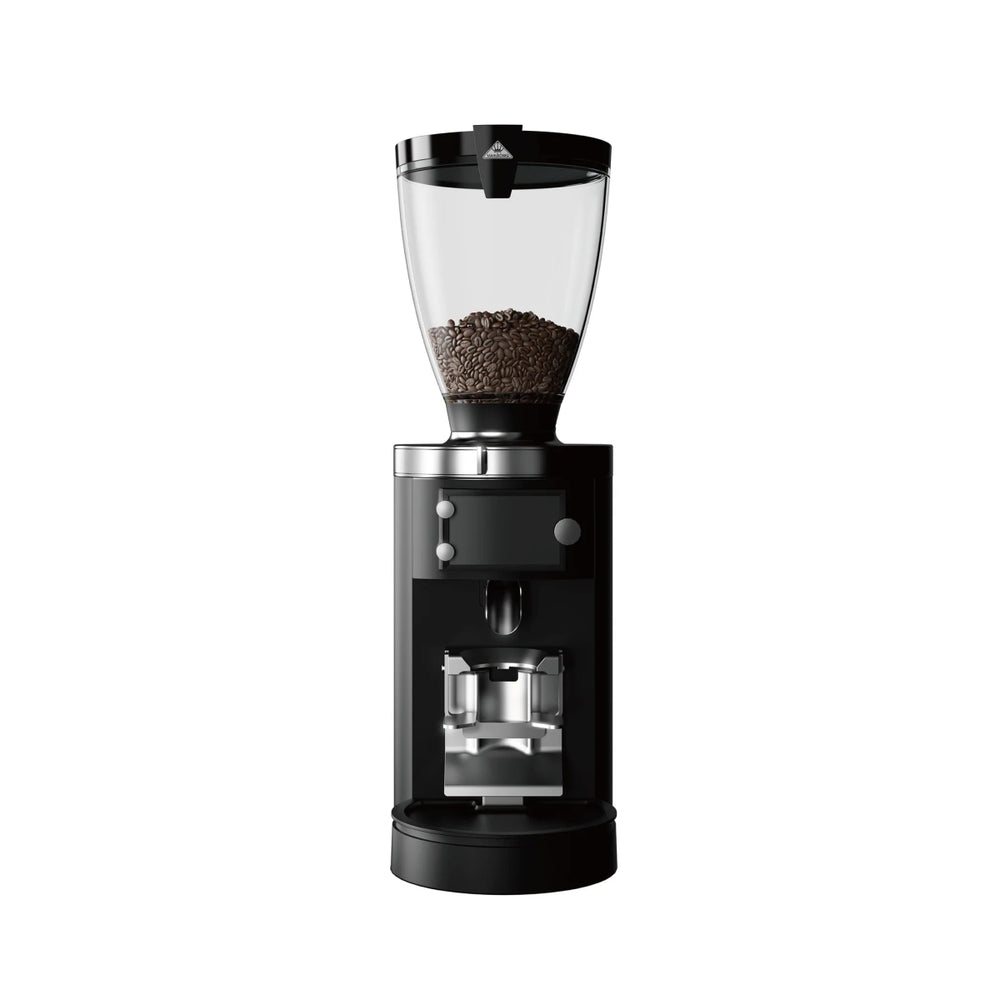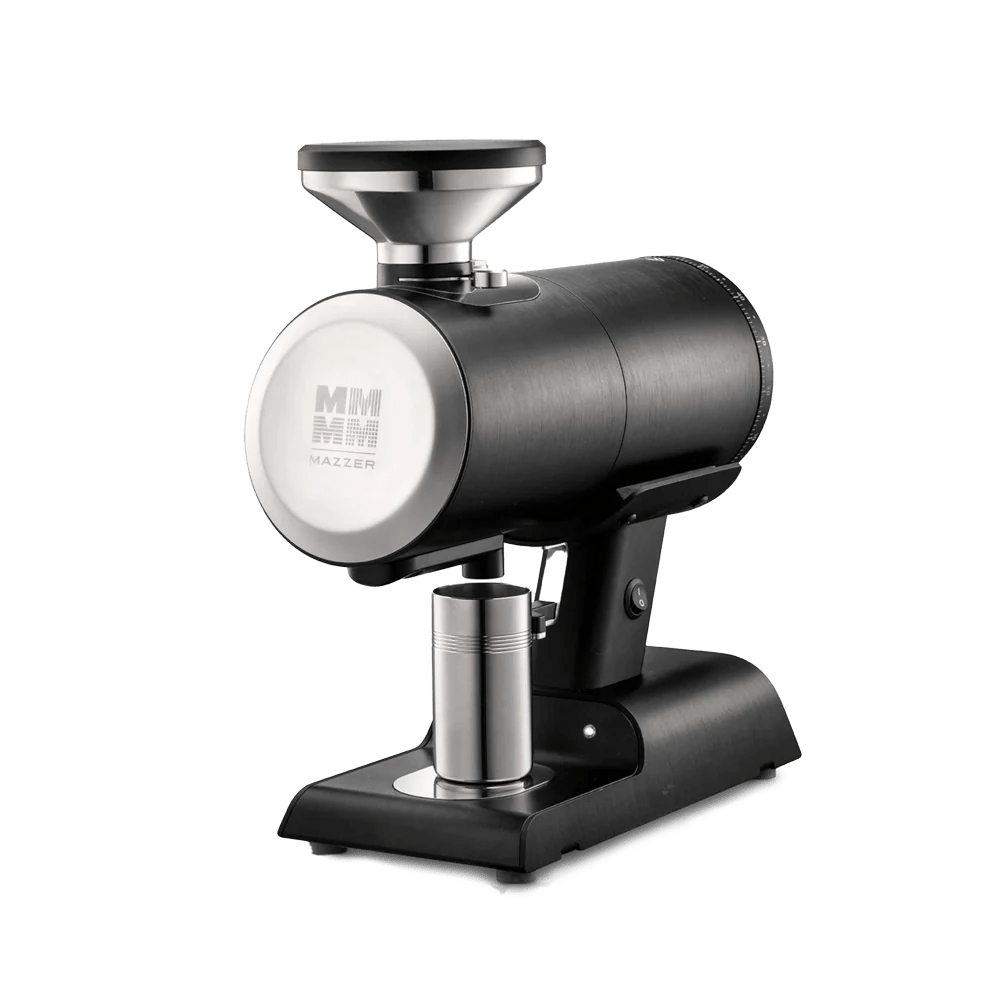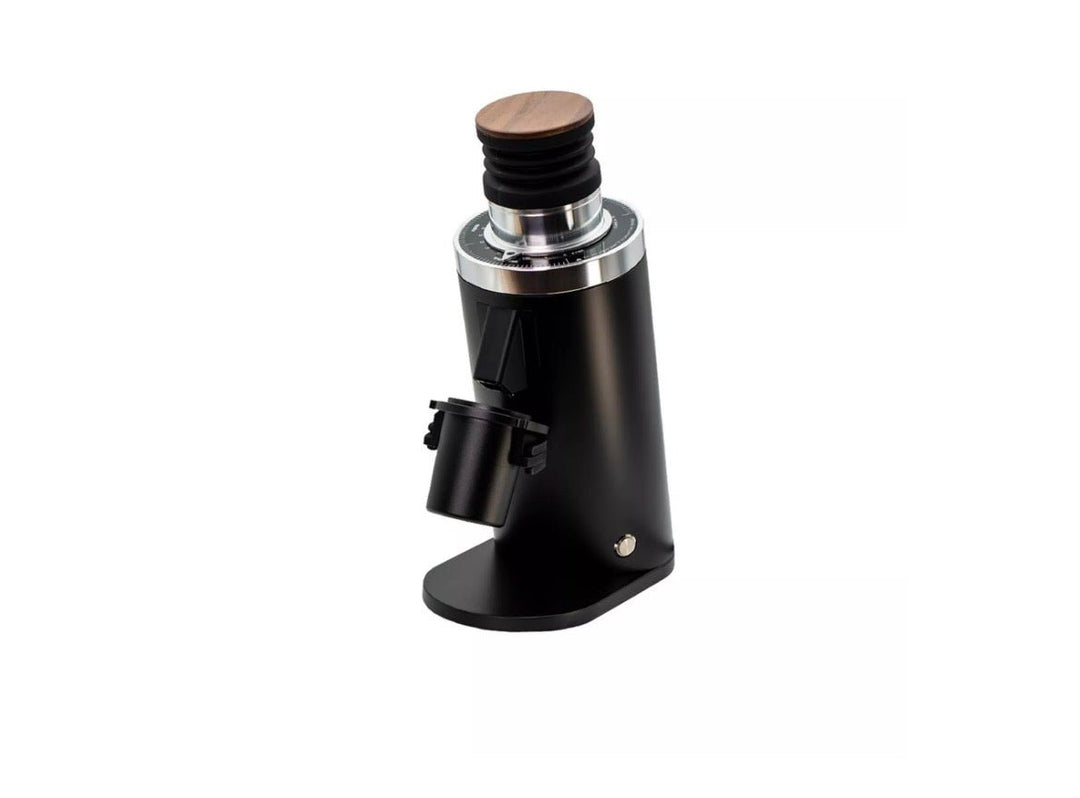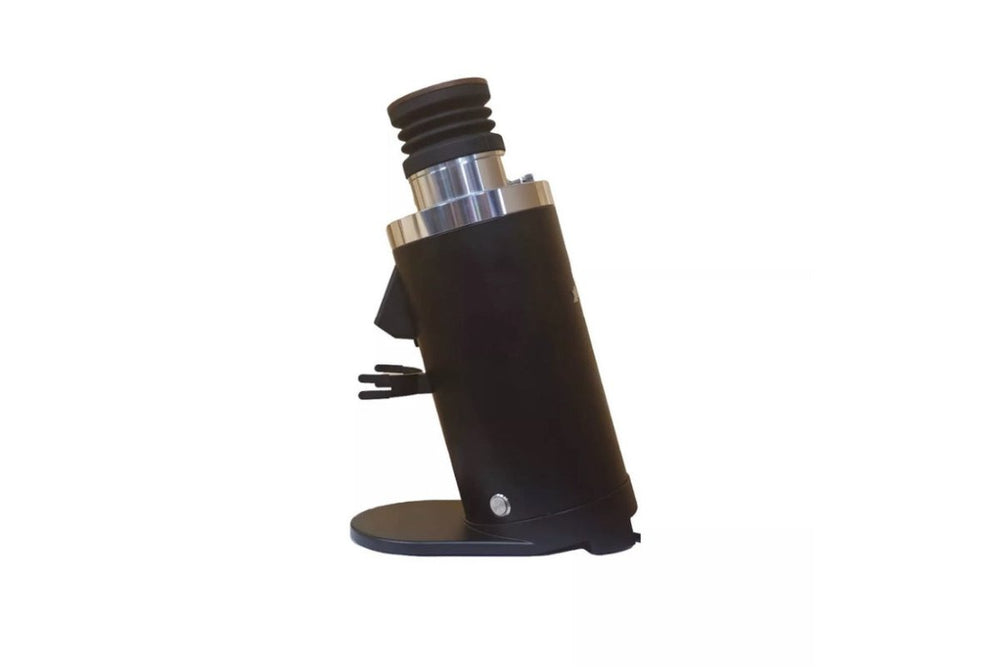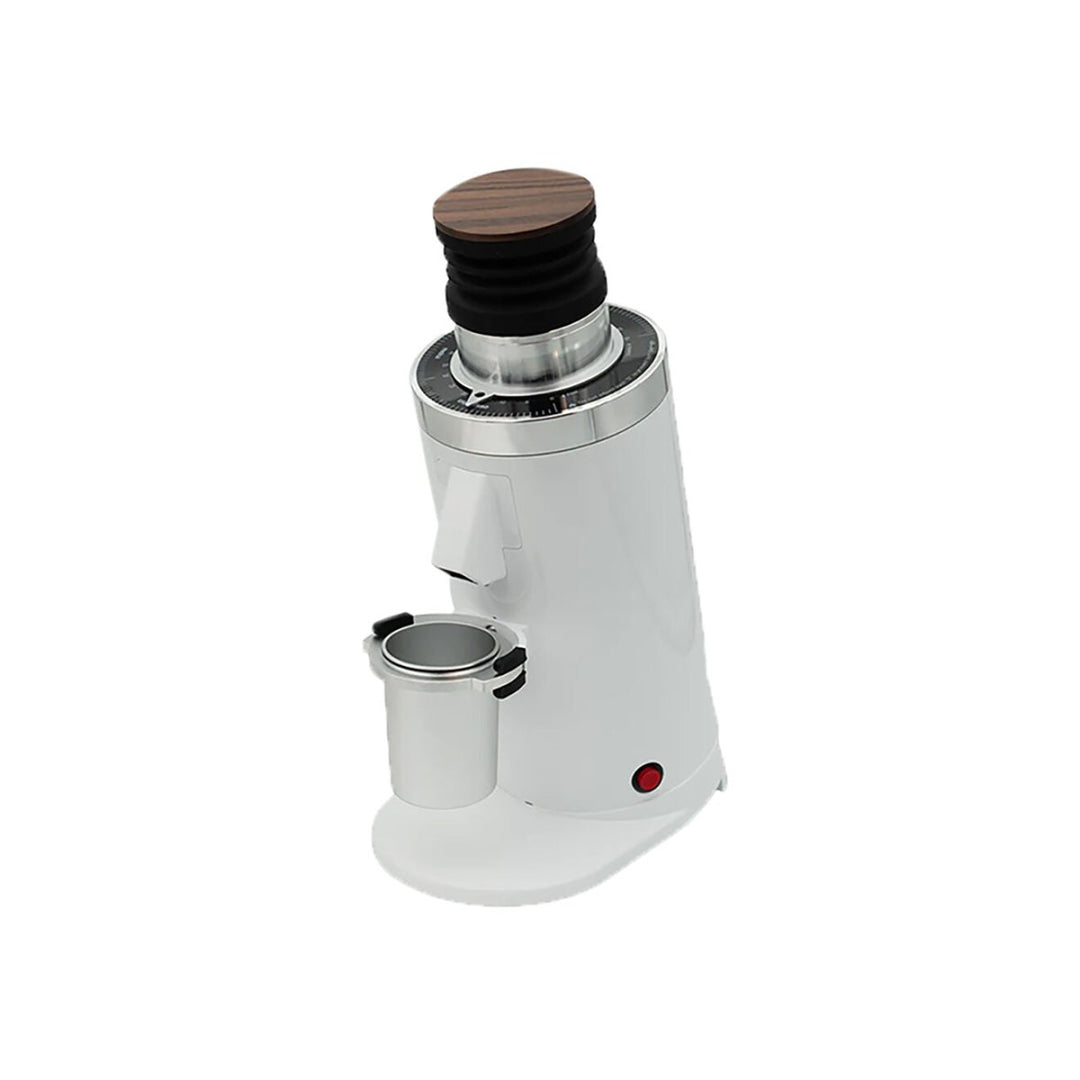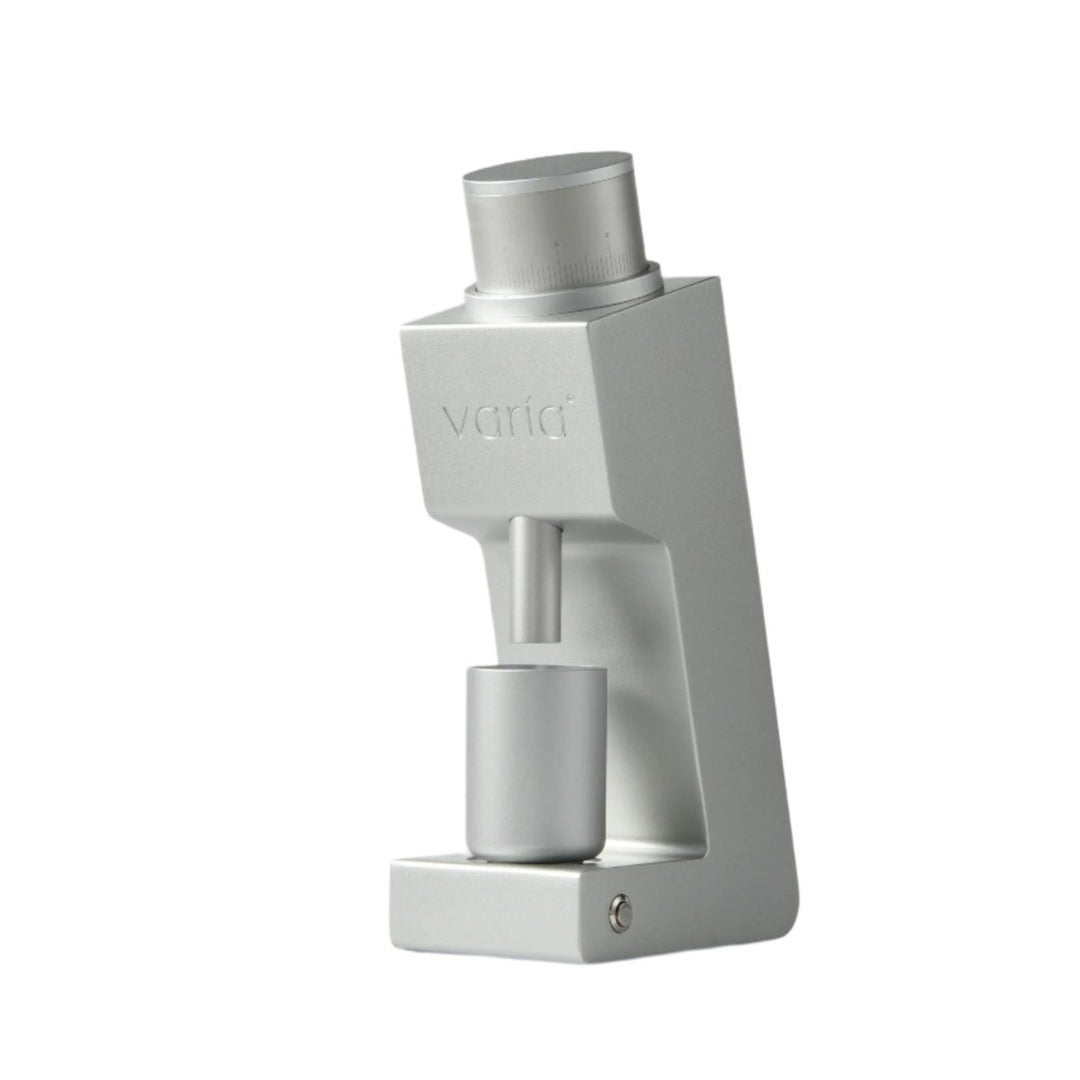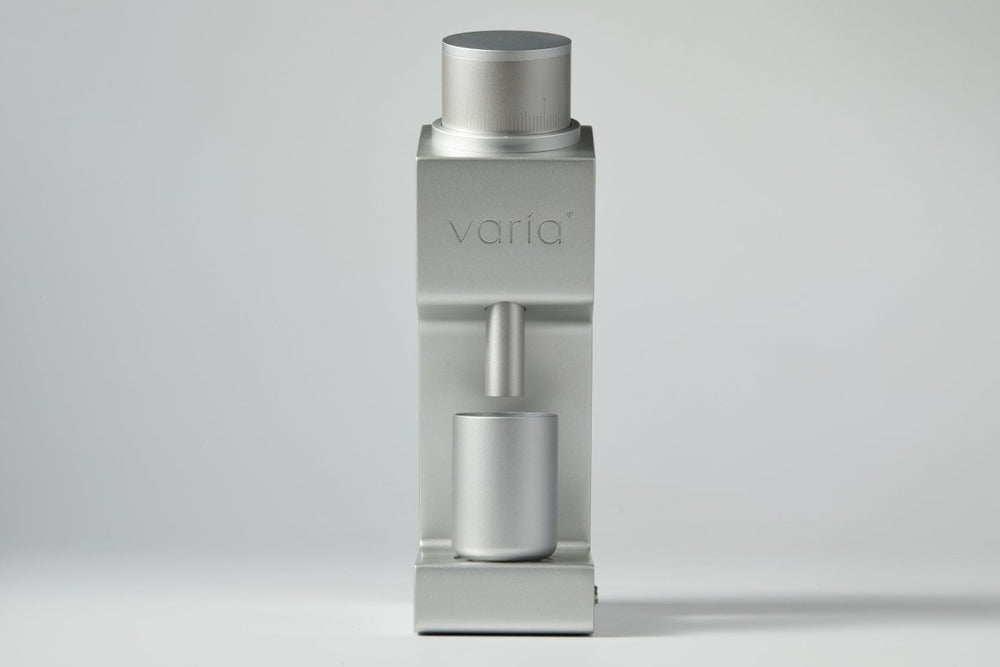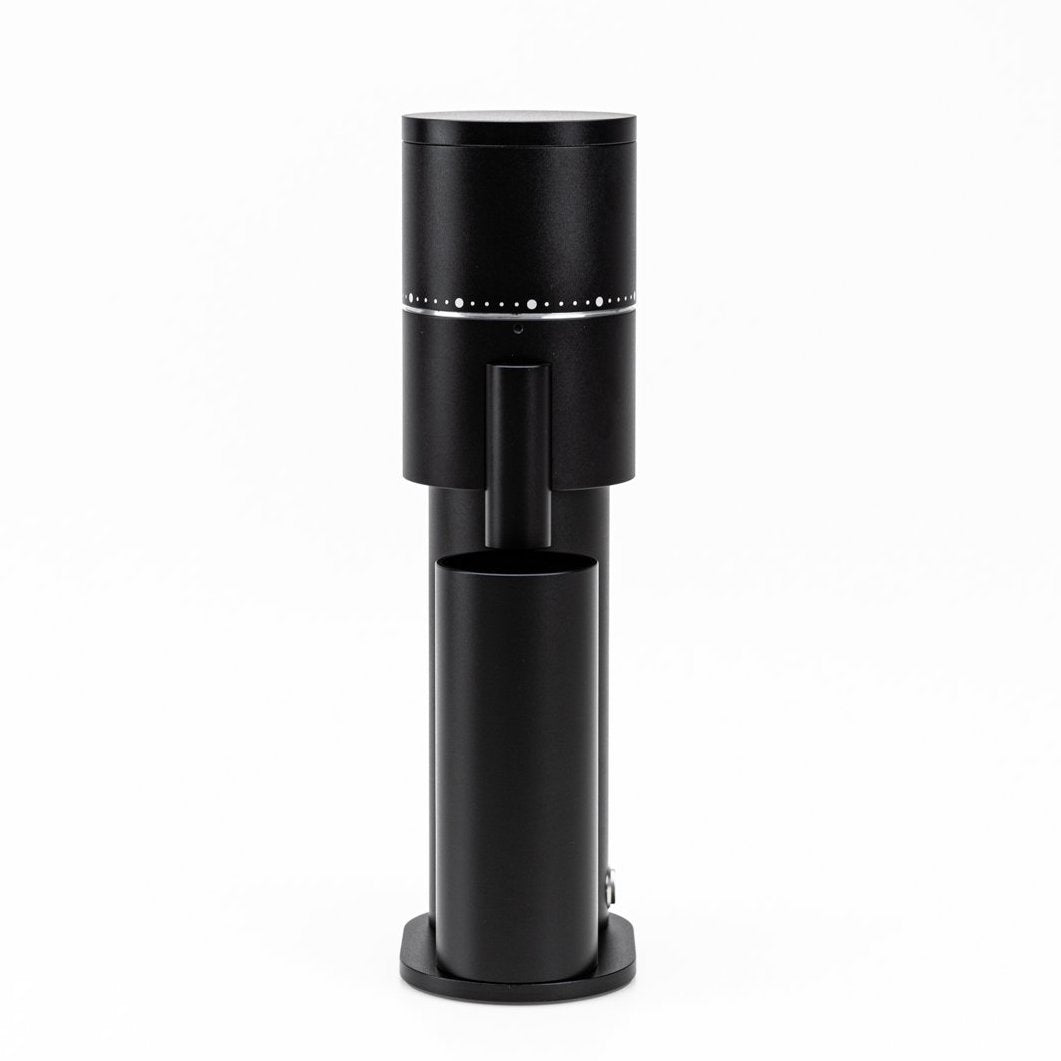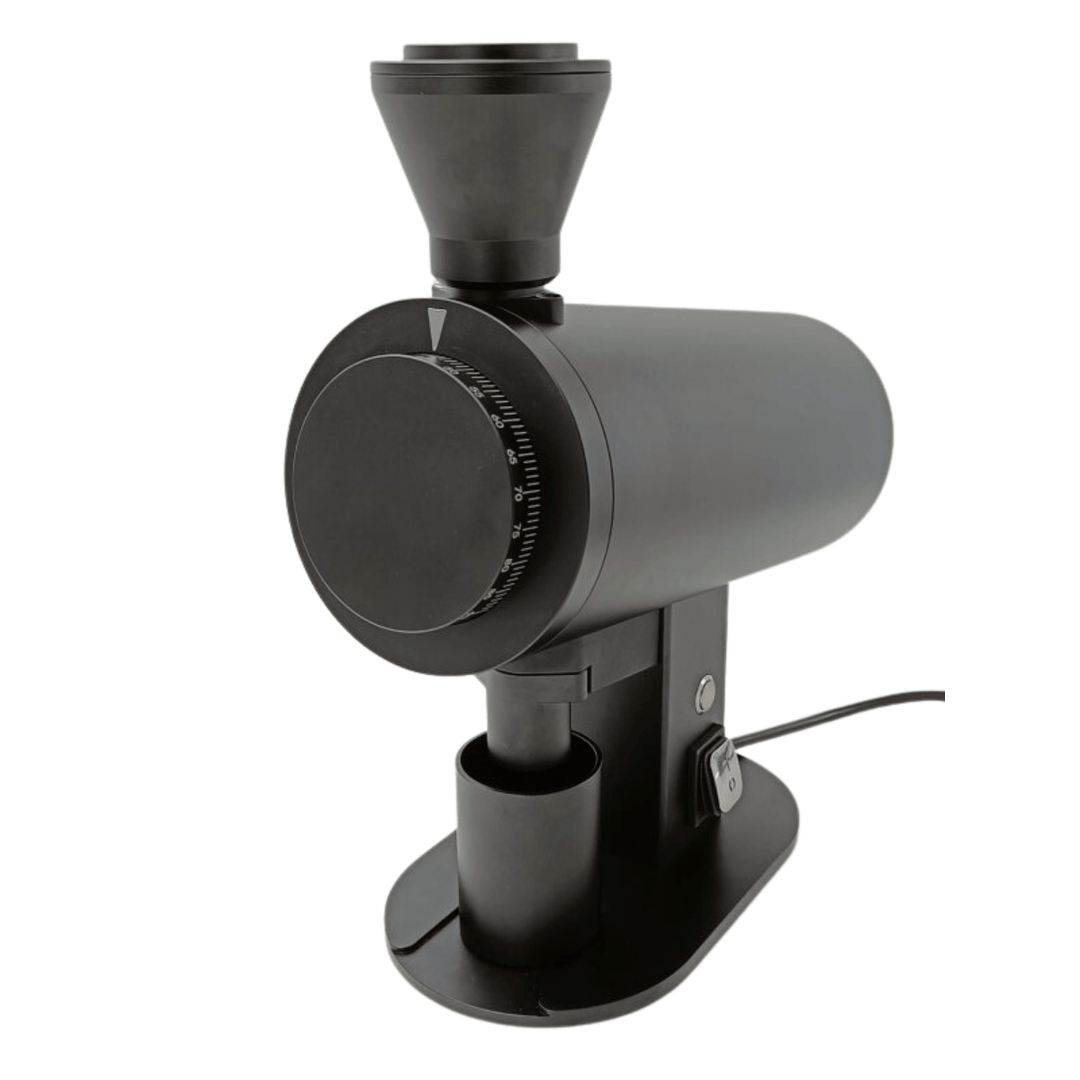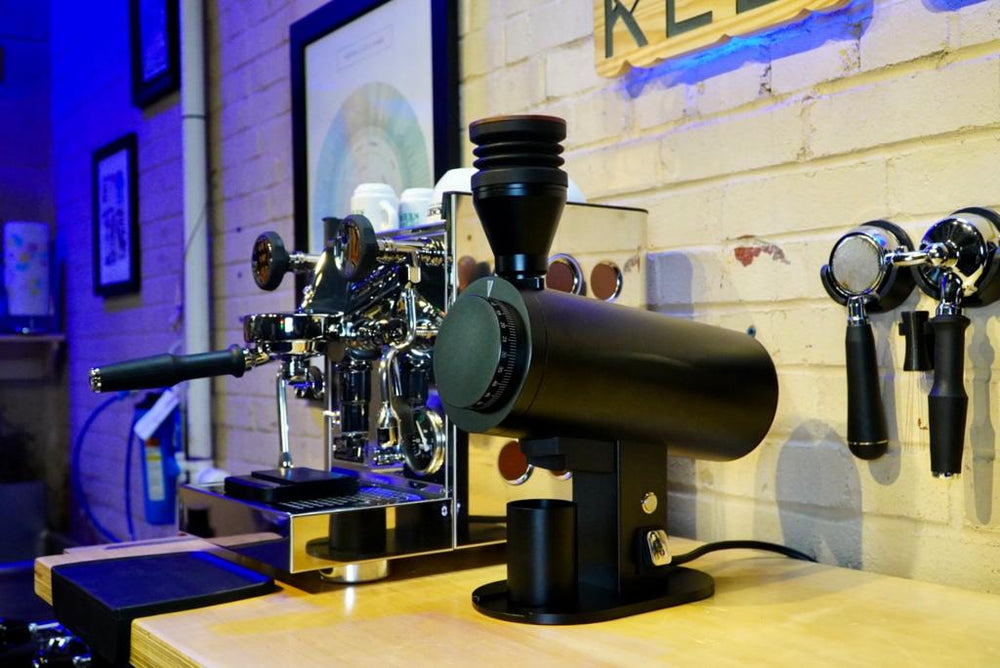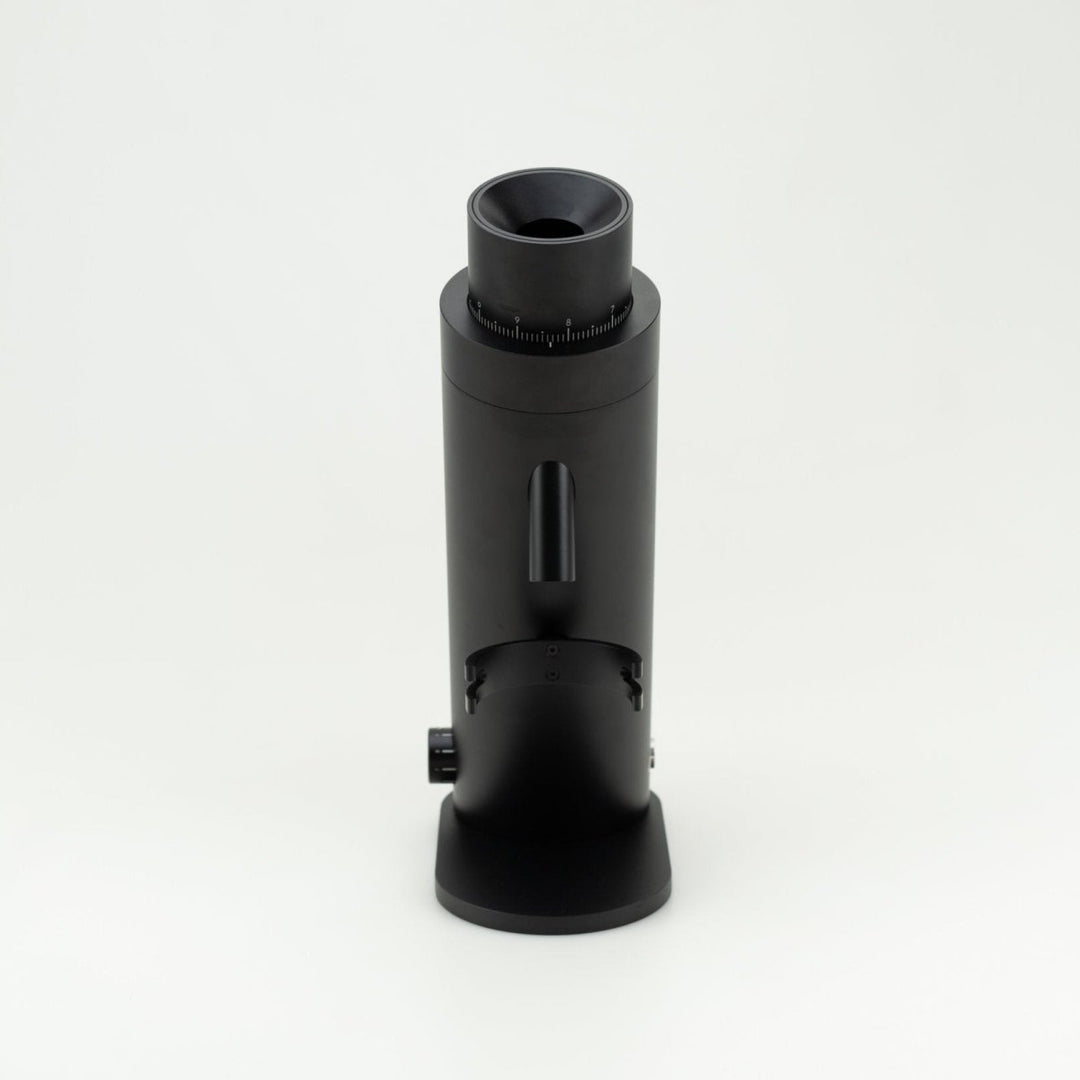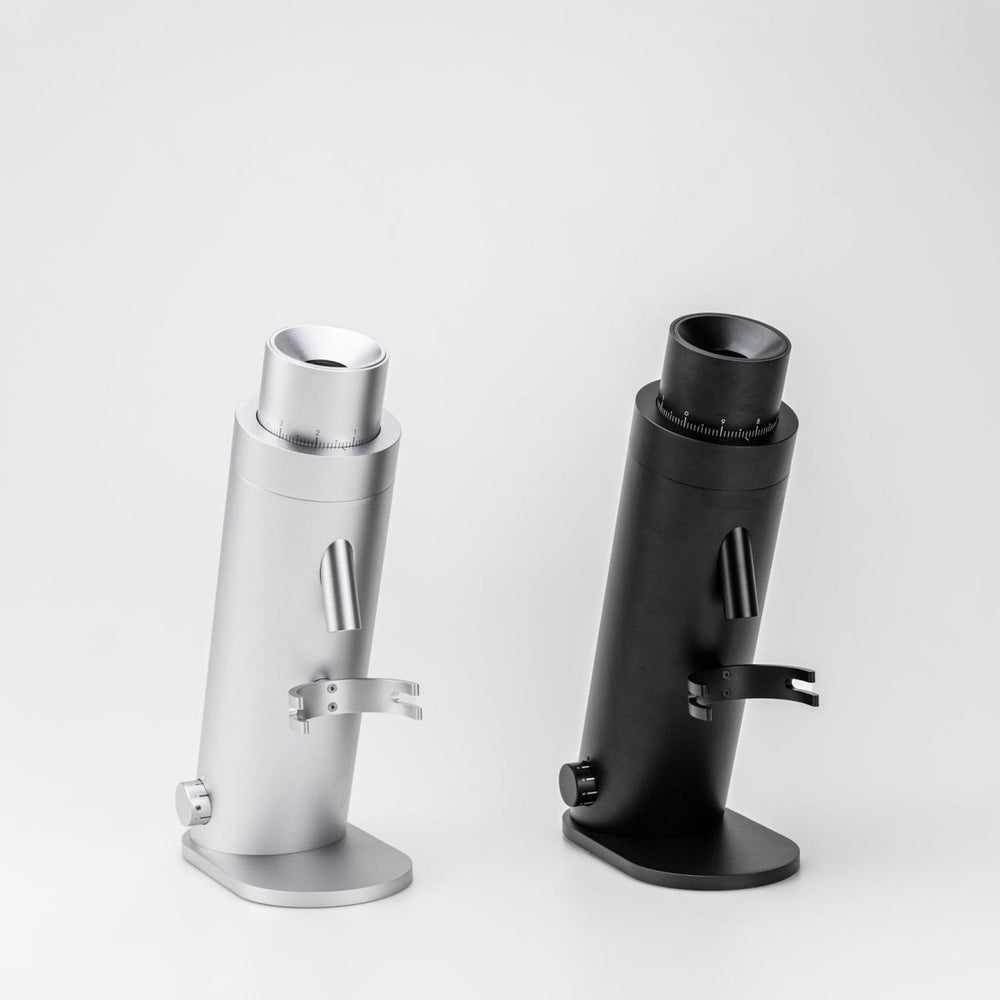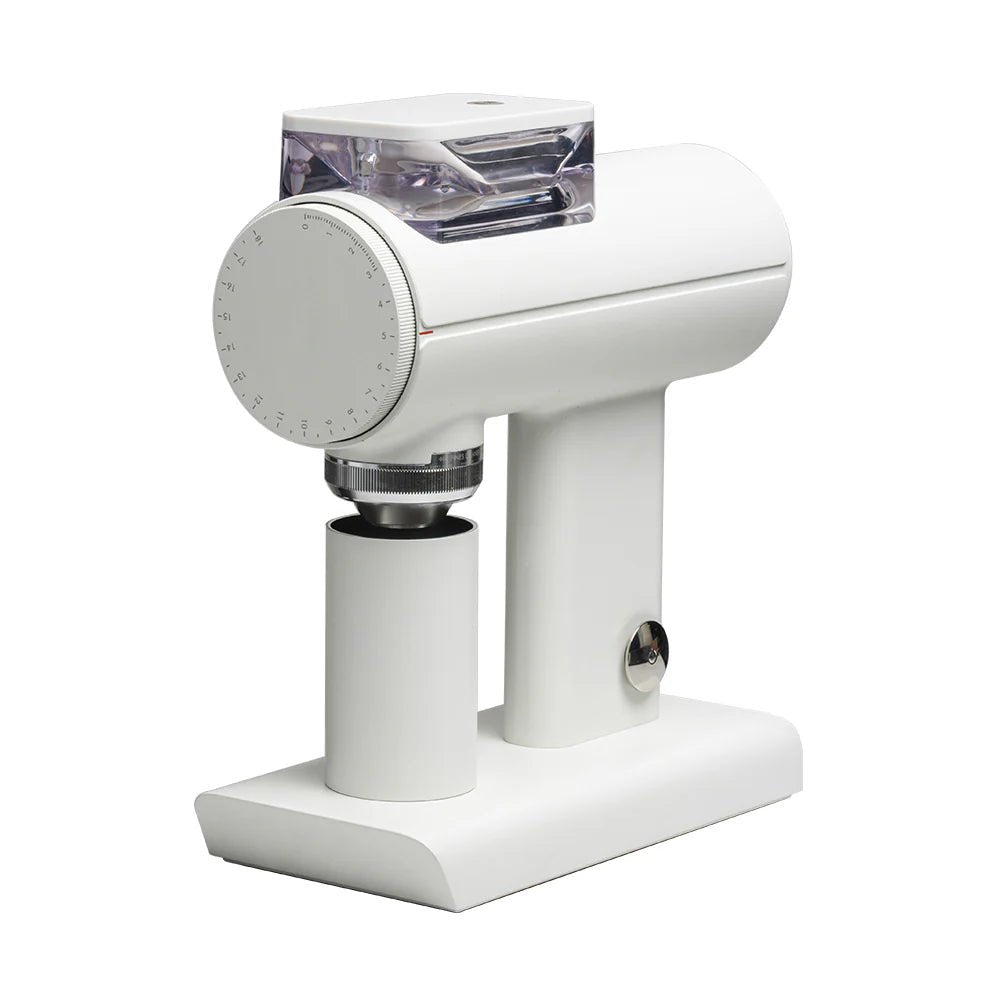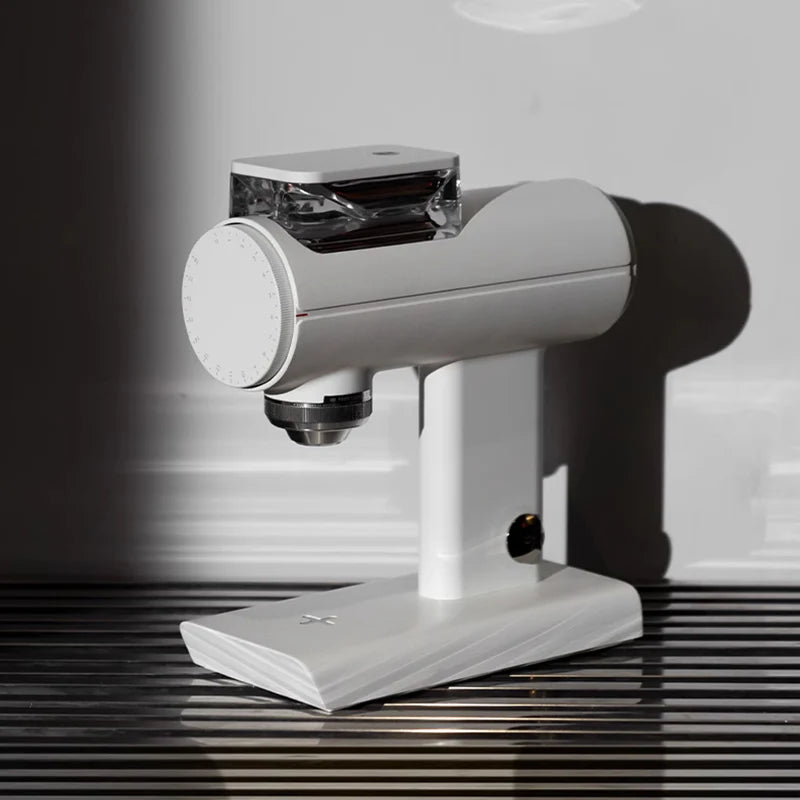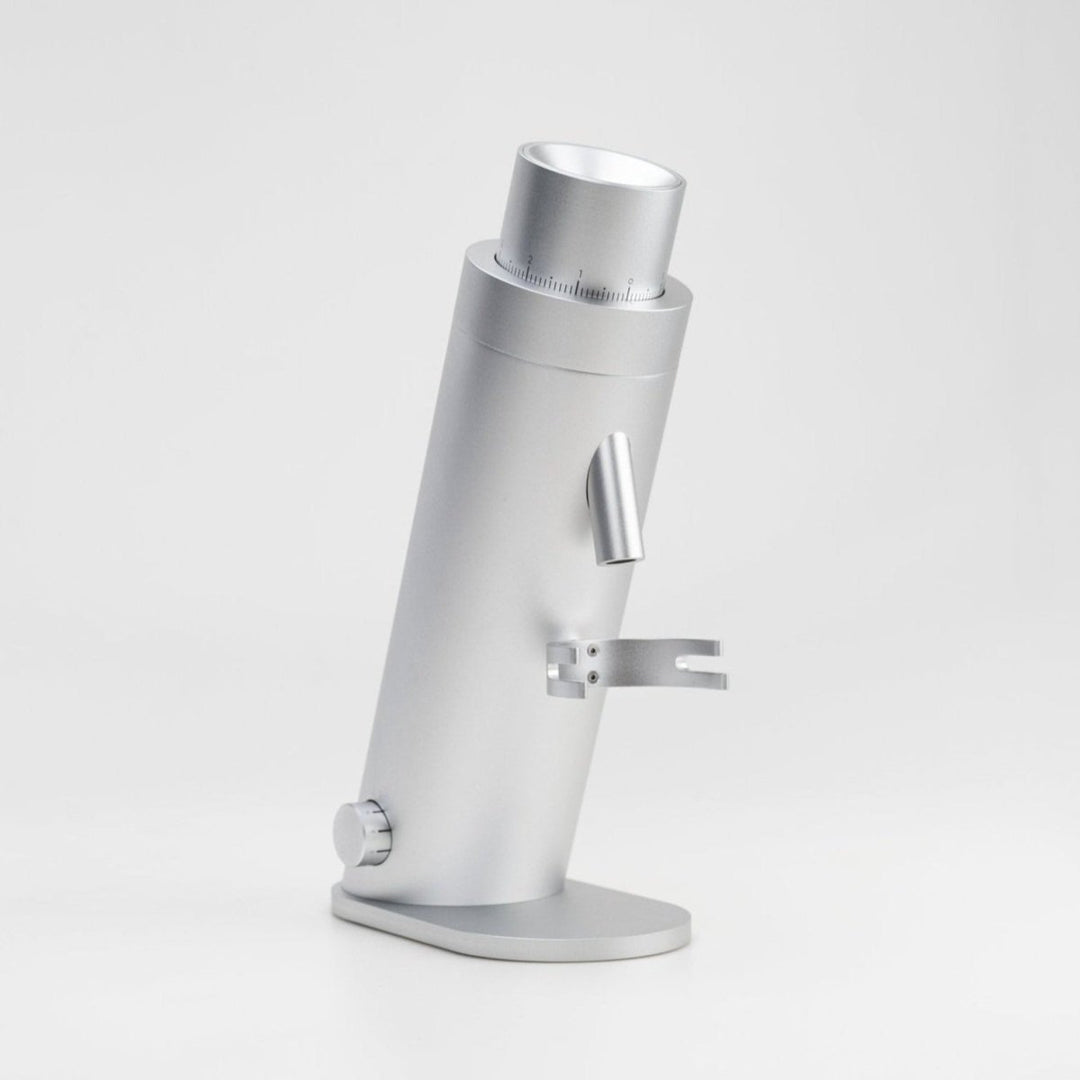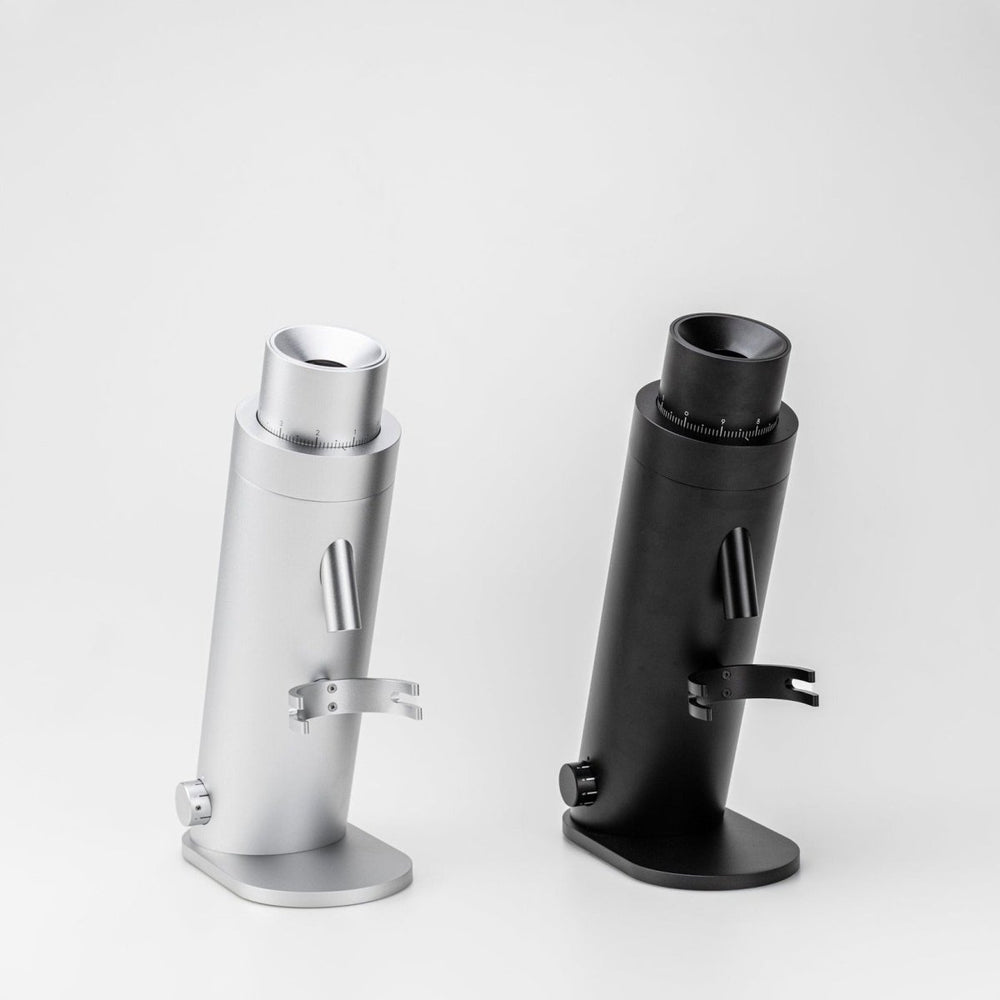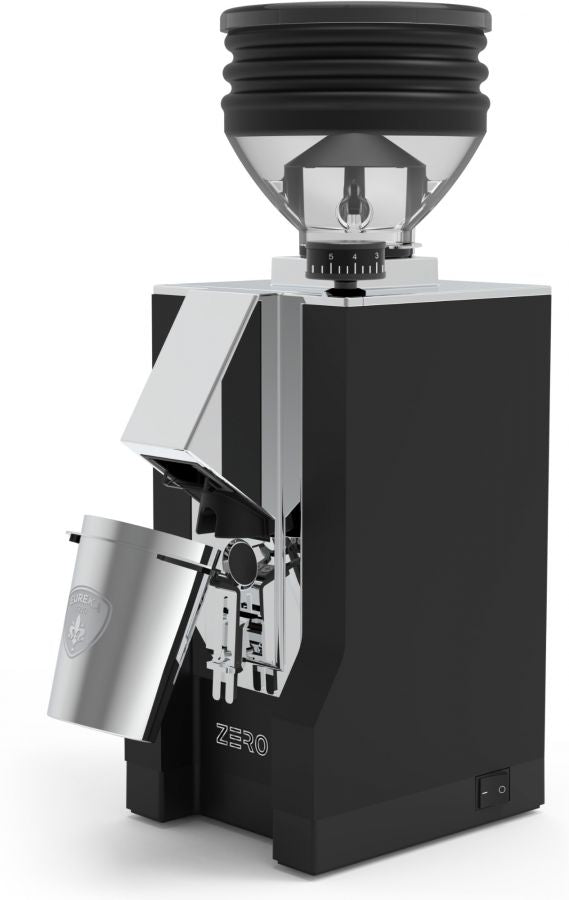Innovative Funktionen in modernen Espressomühlen
Moderne Espressomühlen bieten eine Vielzahl von Funktionen, die den Mahlvorgang noch präziser und effizienter machen. Diese technologischen Innovationen sind darauf ausgelegt, die Kaffeezubereitung zu optimieren und Ihnen zu helfen, den perfekten Espresso mit maximaler Aromafreisetzung und Kaffeequalität zu erzielen. Eine der beliebtesten Technologien, die in vielen modernen Espressomühlen integriert ist, ist die Grind on Demand-Funktion.
Grind on Demand: Frisch gemahlener Kaffee, immer zur richtigen Zeit
Mit der Grind on Demand-Technologie können Sie die genaue Menge Kaffee mahlen, die Sie benötigen, und dieser wird direkt in den Siebträger gemahlen. Diese Funktion garantiert, dass der Kaffee immer frisch ist und keine Kaffeereste im Mahlwerk zurückbleiben. Das bedeutet, dass jeder Mahlvorgang frisch und aromatisch ist, ohne dass alte Kaffeeöle oder Kaffeereste den Geschmack beeinträchtigen. Dies stellt sicher, dass jede Tasse Espresso die volle Aromenvielfalt und Frische bietet, die Sie erwarten.
Die Grind on Demand-Technologie ist besonders vorteilhaft für Kaffeeenthusiasten, die Wert auf Frische und Präzision legen. Sie vermeiden dadurch den Kaffeeverlust und erhalten das bestmögliche Mahlgut, was zu einer gleichmäßigen Extraktion führt und die Aromen des Kaffees perfekt zur Geltung bringt.
Stufenlose Mahlgradeinstellung für individuelle Anpassung
Ein weiteres herausragendes Merkmal vieler moderner Espressomühlen, wie z. B. der Eureka Mignon Specialità, ist die stufenlose Mahlgradeinstellung. Mit dieser Funktion können Sie den Mahlgrad exakt an Ihre spezifischen Anforderungen anpassen. Ob Sie einen feinen Espresso für Ihre Siebträgermaschine oder einen gröberen Kaffee für Filterkaffee zubereiten möchten – die stufenlose Mahlgradeinstellung bietet Ihnen die nötige Flexibilität, um den perfekten Mahlgrad zu erreichen.
Die Möglichkeit, den Mahlgrad mit höchster Präzision einzustellen, ist besonders wichtig, um die Aromen des Kaffees optimal zu extrahieren. Ein zu grober Mahlgrad führt zu einer schwachen Extraktion, während ein zu feiner Mahlgrad den Espresso bitter und unangenehm machen kann. Mit einer stufenlosen Mahlgradeinstellung können Sie den Mahlgrad so anpassen, dass der Espresso die perfekte Balance zwischen Süße, Säure und Bitterkeit erzielt.
Mahlkammervolumen und Kapazität für höchste Effizienz
Die Mahlkammer spielt ebenfalls eine entscheidende Rolle bei der Effizienz und Leistung einer Espressomühle. Viele moderne Espressomühlen verfügen über eine größere Mahlkammer, die es ermöglicht, größere Mengen Kaffee auf einmal zu mahlen, ohne den Kaffeeverlust zu erhöhen. Diese Kapazität ist besonders für den professionellen Einsatz in Cafés und Restaurants von Bedeutung, in denen der Kaffeedurchsatz hoch ist.
Präzise Mahlwerke für gleichmäßige Extraktion
Ein weiteres innovatives Merkmal moderner Espressomühlen ist die Qualität der Mahlwerke. Die meisten Mühlen verwenden Scheibenmahlwerke oder Kegelmahlwerke, die eine besonders gleichmäßige Mahlung bieten. Scheibenmahlwerke sind bei der Espressozubereitung besonders vorteilhaft, da sie eine gleichmäßige Mahlqualität liefern und die Wärmeentwicklung minimieren, die den Kaffee negativ beeinflussen könnte.
Automatische Dosing-Systeme und Wi-Fi-Verbindungen für noch mehr Komfort
Einige der neuesten Modelle bieten automatische Dosiersysteme, die es Ihnen ermöglichen, die Menge an Kaffee präzise zu steuern, die gemahlen wird. Dies ist besonders vorteilhaft, wenn Sie verschiedene Kaffeesorten mit unterschiedlichen Mahlgraden verwenden oder Espresso in großen Mengen zubereiten möchten.
Darüber hinaus bieten einige moderne Espressomühlen Wi-Fi-Verbindungen, die es ermöglichen, den Mahlvorgang über eine Smartphone-App zu steuern. Mit dieser Funktion können Sie Ihre Espressomühle nach Ihren persönlichen Vorlieben einstellen und sogar Rezepte speichern, um den perfekten Espresso bei jedem Mahlvorgang zu wiederholen.
Warum ist eine gute Espressomühle so wichtig?
Die Wahl der richtigen Espressomühle beeinflusst direkt den Geschmack und die Aromen des Espressos. Eine hochwertige Mühle sorgt für gleichmäßiges Mahlen, was zu einer optimalen Kaffeeextraktion führt und das volle Aroma der Kaffeebohnen entfaltet. Eine schlechte Espressomühle kann das Mahlgut ungleichmäßig zerkleinern, was zu einem ungleichmäßigen Mahlvorgang und einem schlechten Espresso führen kann. Bei Bean Bros finden Sie nur Mühlen, die eine präzise Mahlgradeinstellung bieten, um Ihre Kaffeespezialitäten perfekt zuzubereiten. Unsere Espressomühlen ermöglichen es Ihnen, den perfekten Mahlgrad für Ihren Espresso zu erzielen, um das bestmögliche Mahlwerk und Ergebnis zu garantieren.
Eine gleichmäßige Mahlung ist besonders für die Zubereitung von Espresso entscheidend. Wenn das Mahlgut nicht gleichmäßig ist, führt dies zu einer inkonsistenten Extraktion, bei der einige Teile des Kaffees überextrahiert werden und andere unterextrahiert bleiben. Das Resultat ist ein Espresso, der entweder zu bitter oder zu schwach ist. Eine gute Espressomühle verhindert dies, indem sie das Kaffeemahlgut gleichmäßig und fein mahlt, was zu einer harmonischen Kaffeeextraktion und einem perfekten Geschmack führt.
Neben der gleichmäßigen Mahlung bietet eine gute Espressomühle auch die Möglichkeit, den Mahlgrad präzise einzustellen, je nachdem, wie stark oder mild Sie Ihren Espresso mögen. Dies gibt Ihnen die Flexibilität, den Espresso genau nach Ihrem Geschmack zuzubereiten. Mit der richtigen Espressomühle können Sie sicherstellen, dass jede Tasse Kaffee eine konstante Qualität bietet, unabhängig davon, ob Sie zu Hause oder in einem Café sind.
Was macht eine gute Espressomühle aus?
1. Stufenlose Mahlgradeinstellung
Eine der wichtigsten Eigenschaften einer Espressomühle ist die stufenlose Mahlgradeinstellung. Mit dieser Funktion können Sie den Mahlgrad präzise anpassen, je nachdem, ob Sie einen feinen Espresso oder einen gröberen Kaffee für Filterkaffee oder French Press zubereiten möchten. Diese Mahlgradverstellung ermöglicht es Ihnen, die richtige Balance zwischen Süße, Säure und Bitterkeit zu erzielen, um die gewünschten Aromen in Ihrem Espresso oder anderen Kaffeespezialitäten zu extrahieren. Eine präzise Mahlgradeinstellung ist besonders für Espresso von Bedeutung, da die feine Mahlung eine gleichmäßige Kaffeeextraktion gewährleistet, die für den perfekten Espresso unverzichtbar ist.
Ein falsch eingestellter Mahlgrad kann den Espresso wässrig oder bitter machen, was den gesamten Geschmack beeinträchtigt. Mit einer stufenlosen Mahlgradeinstellung in der Espressomühle können Sie genau den Mahlgrad einstellen, der zu Ihrer bevorzugten Zubereitungsmethode passt – sei es für Espresso, Filterkaffee oder Kaffeespezialitäten.
2. Mahlwerk und Mahlscheiben
Das Mahlwerk ist das Herzstück jeder Espressomühle. Es bestimmt, wie gut die Kaffeebohnen zermahlen werden und beeinflusst somit direkt die Kaffeequalität. Es gibt zwei Hauptarten von Mahlwerken: Kegelmahlwerke und Scheibenmahlwerke.
-
Scheibenmahlwerke sind in modernen Espressomühlen weit verbreitet und bieten eine schnellere und gleichmäßigere Mahlung, was besonders für die Zubereitung von Espresso von Vorteil ist. Diese Art von Mahlwerk gewährleistet eine präzisere Mahlqualität und minimiert die Wärmeentwicklung, die den Kaffee negativ beeinflussen könnte.
-
Kegelmahlwerke bieten eine geringere Wärmeentwicklung und sind leiser, aber sie können bei der Espressozubereitung nicht die gleiche Konsistenz wie Scheibenmahlwerke bieten.
Die Größe der Mahlscheiben (z. B. 55 mm oder 64 mm) ist ebenfalls entscheidend. Größere Mahlscheiben bieten eine höhere Mahlgeschwindigkeit und präzisere Ergebnisse. Mühlen mit größeren Mahlscheiben können auch größere Mengen Kaffee schneller und gleichmäßiger mahlen, was besonders im professionellen Bereich von Vorteil ist.
3. Grind on Demand
Die Grind on Demand-Technologie ist eine der innovativsten Funktionen moderner Espressomühlen. Mit dieser Funktion können Sie genau die Menge Kaffee mahlen, die Sie für eine Tasse Espresso oder Kaffeespezialität benötigen. Diese Mühlen mahlen den Kaffee direkt in den Siebträger, wodurch Kaffeereste im Mahlwerk vermieden werden. So wird der Kaffee immer frisch und aromatisch gemahlen – genau nach Bedarf.
Die Grind on Demand-Technologie ist besonders vorteilhaft, wenn Sie Espresso oder Kaffeespezialitäten zubereiten, da der Kaffee direkt im Moment des Brühens frisch gemahlen wird. Dies stellt sicher, dass der Kaffee seine frischen Aromen und Öle behält, was zu einem reicheren und volleren Geschmack führt. Mit dieser Funktion können Sie den Kaffeemahlgrad exakt kontrollieren, um das bestmögliche Mahlgut zu erhalten.
4. Mahlkammer und Kapazität
Die Mahlkammer einer Espressomühle sollte ausreichend Kapazität bieten, um die Menge Kaffee zu mahlen, die Sie benötigen. Für den Haushalt sind Mühlen mit einer kleineren Mahlkammer vollkommen ausreichend, da Sie in der Regel nur eine Tasse Espresso auf einmal zubereiten. Bei einer größeren Mahlkammer können Sie jedoch größere Mengen Kaffee mahlen, was besonders im professionellen Bereich wichtig ist, um den hohen Kaffeedurchsatz in Cafés und Restaurants zu bewältigen.
Die Kapazität der Mahlkammer beeinflusst nicht nur die Menge des Kaffeemahlguts, das Sie auf einmal mahlen können, sondern auch die Effizienz des Mahlvorgangs. Eine größere Mahlkammer ermöglicht ein schnelleres Mahlen und eine höhere Durchsatzrate, was in der Gastronomie von großer Bedeutung ist. Für den privaten Gebrauch ist eine kleinere Mahlkammer jedoch ausreichend und bietet den Vorteil, dass keine Kaffeereste im Mahlwerk zurückbleiben, was den Kaffee stets frisch hält.
5. Mahlgeschwindigkeit und Geräuschpegel
Ein oft übersehener, aber wichtiger Aspekt einer Espressomühle ist die Mahlgeschwindigkeit und der Geräuschpegel. Besonders bei Kegelmahlwerken ist die Geräuschentwicklung im Vergleich zu Scheibenmahlwerken oft leiser, was besonders für den Haushalt oder kleinere Cafés von Vorteil ist, wo eine ruhige Atmosphäre gewünscht wird.
Die Mahlgeschwindigkeit ist ebenfalls ein wichtiger Faktor, insbesondere für den professionellen Einsatz. Mahlkönig und Eureka bieten Modelle, die schnelle und effiziente Mahlvorgänge gewährleisten, um den Kaffeedurchsatz zu optimieren und gleichzeitig eine hohe Kaffeequalität zu bewahren. Die richtige Kombination aus Mahlgeschwindigkeit und Mahlqualität ist entscheidend für den perfekten Espresso.
6. Benutzerfreundlichkeit und Design
Die Benutzerfreundlichkeit ist ein weiterer wichtiger Faktor bei der Auswahl der richtigen Espressomühle. Viele moderne Mühlen bieten benutzerfreundliche Steuerungen und Displays, die eine einfache Einstellung des Mahlgrads und der Mahlmenge ermöglichen. Auch die Reinigung und Wartung sollte einfach und schnell erfolgen können, um die Langlebigkeit der Mühle zu gewährleisten.
Das Design spielt ebenfalls eine Rolle, insbesondere wenn die Mühle in der Kaffeezubereitung-Station oder im Haushalt sichtbar ist. Eine gut gestaltete Mühle, wie die Eureka Mignon Specialità, kombiniert hochwertige Materialien mit funktionalen Designmerkmalen und passt sowohl in professionelle Kaffeeumgebungen als auch in stilvolle Küchen.
Unsere Auswahl an Espressomühlen für den perfekten Espresso
Bei Bean Bros bieten wir Ihnen eine Vielzahl von Espressomühlen, die sowohl für den Haushalt als auch für den professionellen Einsatz in Cafés und Restaurants geeignet sind. Jede Mühle wurde sorgfältig ausgewählt, um Ihnen höchste Mahlqualität und Konsistenz zu bieten. Egal, ob Sie ein leidenschaftlicher Kaffeeliebhaber sind, der zu Hause den besten Espresso zubereiten möchte, oder ein professioneller Barista in einem Café – bei uns finden Sie die perfekte Espressomühle für Ihre Bedürfnisse. Unsere Mühlen bieten innovative Funktionen wie stufenlose Mahlgradeinstellung, Grind on Demand und Grind by Weight, die Ihre Kaffeespezialitäten auf ein neues Level heben.
Hier sind einige unserer beliebtesten Espressomühlen, die für jedes Budget und jeden Bedarf die perfekte Wahl bieten:
Die Varia VS3 Gen2 ist eine ausgezeichnete Wahl für den Haushalt. Mit ihrer stufenlosen Mahlgradeinstellung können Sie den Mahlgrad ganz nach Ihren Bedürfnissen anpassen – ob für feinsten Espresso oder groberen Filterkaffee. Die Grind on Demand-Funktion sorgt dafür, dass Sie immer frisches Kaffeemahlgut direkt in den Siebträger mahlen, was zu einer optimalen Kaffeeextraktion führt. Diese Espressomühle bietet eine hohe Präzision und garantiert eine konstante Mahlqualität für Ihre Kaffeespezialitäten.
Die Varia VS3 Gen2 ist besonders für Kaffeeenthusiasten geeignet, die den gesamten Kaffeezubereitungsprozess selbst steuern möchten. Sie bietet eine benutzerfreundliche Steuerung und ist ideal für alle, die die Aromen ihres Espressos oder Filterkaffees perfektionieren möchten.
Die DF64 ProBarista ist eine Espressomühle, die speziell für den professionellen Einsatz entwickelt wurde. Sie verfügt über die Grind by Weight-Technologie, die es Ihnen ermöglicht, die Kaffeemenge exakt abzumessen, um konstante Mahlqualität zu gewährleisten. Mit einer stufenlosen Mahlgradeinstellung können Sie den Mahlgrad ganz nach Ihren individuellen Vorlieben einstellen, um den perfekten Espresso zu erzielen.
Dank der Präzision und der schnellen Mahlvorgänge ist die DF64 ProBarista besonders für Cafés und Kaffeespezialitäten-Läden geeignet, in denen der Kaffeedurchsatz hoch ist und dennoch eine gleichbleibend hohe Kaffeequalität gewahrt werden muss. Diese Mühle ist eine Investition, die Ihre Kaffeezubereitung optimiert und Ihr Geschäftserlebnis auf ein neues Level hebt.
Die Eureka Mignon Specialità ist eine der beliebtesten Espressomühlen für den Haushalt und für den professionellen Einsatz. Mit 55 mm Mahlscheiben und einer stufenlosen Mahlgradeinstellung können Sie den Mahlgrad fein anpassen, um den gewünschten Espresso oder Kaffee zu kreieren. Die Grind on Demand-Funktion sorgt dafür, dass das Kaffeemahlgut immer frisch und aromatisch in den Siebträger gemahlen wird.
Die Eureka Mignon Specialità bietet nicht nur hervorragende Mahlqualität, sondern überzeugt auch mit ihrem kompakten Design und leisen Mahlvorgängen. Sie ist die ideale Wahl für den Haushalt, in dem Sie Ihre Kaffeespezialitäten mit perfektem Mahlgut genießen möchten.
Die Mahlkönig E65S GBW ist eine hochpräzise Espressomühle, die sich ideal für den Einsatz in Cafés und Restaurants eignet. Mit der Grind by Weight-Technologie können Sie die gewünschte Menge Kaffeemahlgut genau abwiegen, um die Kaffeequalität konstant hoch zu halten. Diese Mühle bietet Ihnen präzise Mahlgrade, die für die Kaffeeextraktion wichtig sind, und sorgt für einen hohen Kaffeedurchsatz in einem professionellen Umfeld.
Die Mahlkönig E65S GBW zeichnet sich durch ihre robuste Bauweise und die Fähigkeit aus, auch bei hohem Kaffeedurchsatz konstant exzellente Mahlqualitäten zu liefern. Diese Espressomühle ist die perfekte Wahl für den professionellen Barista, der eine zuverlässige und schnelle Mühle benötigt.
Die Timemore Sculptor 078S vereint modernes Design mit fortschrittlicher Technik und ist daher eine ausgezeichnete Wahl für den Haushalt. Mit ihrer stufenlosen Mahlgradeinstellung und dem eleganten, minimalistischen Erscheinungsbild ist sie ideal für alle, die sowohl Funktionalität als auch Stil in ihrer Kaffeezubereitung suchen.
Mit einem Kegelmahlwerk sorgt diese Espressomühle für eine gleichmäßige und präzise Mahlung, die für die Zubereitung von Espresso und anderen Kaffeespezialitäten erforderlich ist. Die Timemore Sculptor 078S eignet sich perfekt für Kaffeeenthusiasten, die Wert auf eine konstante Mahlqualität und ein ansprechendes Design legen.
Die Eureka Mignon Single Dose ist eine ausgezeichnete Wahl für Kaffeeenthusiasten, die nur eine kleine Menge Kaffee auf einmal mahlen möchten. Mit der Grind on Demand-Technologie können Sie exakt die Menge an Kaffeemahlgut mahlen, die Sie für eine Tasse Espresso benötigen, ohne Kaffeereste im Mahlwerk zu hinterlassen.
Diese Mühle ist ideal für den Single Dose-Einsatz und sorgt dafür, dass der Kaffee immer frisch und aromatisch ist. Sie ist besonders für Baristas geeignet, die den Geschmack und die Aromen ihres Espressos perfektionieren möchten.
Warum Bean Bros die beste Wahl für Espressomühlen ist
Bei Bean Bros bieten wir nicht nur eine exzellente Auswahl an Espressomühlen, sondern auch eine sorgfältige Auswahl an Kaffeemühlen, die Ihnen eine präzise und konstante Mahlqualität für Ihre Kaffeespezialitäten bieten. Unsere Mühlen sind sowohl für den Haushalt als auch für den professionellen Einsatz in Cafés und Restaurants perfekt geeignet. Mit innovativen Funktionen wie stufenloser Mahlgradeinstellung, Grind on Demand und Grind by Weight stellen wir sicher, dass jede Espressomühle in unserem Sortiment den höchsten Qualitätsstandards entspricht und Ihre Kaffeezubereitung perfektioniert.
Mahlgrad und seine Auswirkungen auf den Espresso
Warum ist der Mahlgrad entscheidend?
Der Mahlgrad hat einen direkten und entscheidenden Einfluss auf die Extraktion des Espressos. Ein zu grober Mahlgrad führt zu einer schwachen und wässrigen Tasse Espresso, da das Kaffeemahlgut nicht genügend Zeit hat, um die Aromen vollständig zu extrahieren. Auf der anderen Seite kann ein zu feiner Mahlgrad den Espresso bitter und unangenehm machen, da der Kaffee zu lange extrahiert wird und dabei unangenehme Bitterstoffe freisetzt. Die richtige Mahlgradeinstellung sorgt dafür, dass der Espresso mit einer ausgewogenen Extraktion und einem intensiven, aromatischen Geschmack zubereitet wird.
Mit der richtigen Mahlgradeinstellung können Sie sicherstellen, dass Ihre Tasse Espresso den perfekten Geschmack hat – intensiv, aromatisch und gut balanciert. Der Mahlgrad ist also entscheidend, um das Mahlgut optimal zu extrahieren und den Kaffee in seiner vollen Vielfalt zu genießen. Eine präzise Espressomühle mit einer stufenlosen Mahlgradeinstellung gibt Ihnen die Flexibilität, den Mahlgrad exakt anzupassen, um das beste Ergebnis aus Ihren Kaffeebohnen herauszuholen.
Wie beeinflusst der Mahlgrad die Aromen des Kaffees?
Ein zu grober oder zu feiner Mahlgrad kann die Aromen des Kaffees erheblich beeinträchtigen. Wenn der Mahlgrad zu grob ist, wird der Espresso unterextrahiert und verliert an Intensität. Infolgedessen bleiben viele der feinen Aromen des Kaffees ungenutzt, was zu einem schwachen und unbefriedigenden Espresso führt. Bei einem zu feinen Mahlgrad wird der Espresso dagegen überextrahiert, was die Freisetzung von Bitterstoffen und anderen unangenehmen Aromen begünstigt.
Ein gleichmäßiger Mahlgrad sorgt hingegen für eine gleichmäßige Extraktion, bei der alle Aromen des Kaffees gleichmäßig freigesetzt werden. So können die natürlichen Aromen des Espresso – von fruchtigen Noten bis hin zu schokoladigen und nussigen Nuancen – optimal zur Geltung kommen. Dies ist besonders wichtig, wenn Sie eine hochwertige Espressomühle mit einer präzisen Mahlgradeinstellung verwenden, die es Ihnen ermöglicht, den Mahlgrad an den spezifischen Kaffee und Ihre Zubereitungsmethode anzupassen.
Die Bedeutung der Mühlenpflege
Warum ist die Reinigung Ihrer Espressomühle so wichtig?
Die regelmäßige Reinigung Ihrer Espressomühle ist entscheidend, um die Mahlqualität langfristig zu erhalten und einen konstant hohen Kaffee-Geschmack zu gewährleisten. Über die Zeit sammeln sich in der Mahlkammer und an den Mahlscheiben Kaffeereste und Öle an, die den Kaffee-Geschmack beeinträchtigen können. Diese Rückstände können die Aromen des Kaffees dämpfen und eine unangenehme Bitterkeit erzeugen.
Indem Sie Ihre Espressomühle regelmäßig reinigen, verhindern Sie, dass diese Rückstände den Geschmack Ihrer Kaffeespezialitäten negativ beeinflussen. Die Mahlscheiben sollten mindestens einmal pro Woche gereinigt werden, besonders wenn Sie häufig verschiedene Kaffeearten mahlen. Auch die Mahlkammer sollte von Zeit zu Zeit gesäubert werden, um sicherzustellen, dass keine alten Kaffeereste zurückbleiben. Dies sorgt nicht nur für eine bessere Mahlqualität, sondern verlängert auch die Lebensdauer Ihrer Espressomühle.
Kalibrierung der Mühle für optimale Ergebnisse
Eine regelmäßige Kalibrierung Ihrer Espressomühle ist ebenfalls wichtig, um sicherzustellen, dass der Mahlgrad immer optimal ist. Über die Zeit kann sich die Mühle durch den Gebrauch leicht verstellen, was zu einer Veränderung des Mahlgrads und damit zu einer schlechteren Extraktion führen kann. Eine schlecht kalibrierte Mühle kann zu unerwünschten Ergebnissen führen, wie beispielsweise einem Espresso, der entweder zu bitter oder zu wässrig ist.
Indem Sie Ihre Mühle regelmäßig kalibrieren, stellen Sie sicher, dass der Mahlgrad exakt eingestellt ist und jedes Mal die gewünschte Mahlqualität erzielt wird. Viele moderne Espressomühlen bieten einfache Methoden zur Kalibrierung, sodass Sie Ihre Mühle jederzeit auf die optimalen Mahlgradeinstellungen zurücksetzen können. Dies ist besonders wichtig, wenn Sie regelmäßig zwischen verschiedenen Kaffeesorten oder Mahlgraden wechseln.
FAQ – Häufig gestellte Fragen zu Espressomühlen
1. Was ist der Unterschied zwischen Kegel- und Scheibenmahlwerken?
Scheibenmahlwerke bieten eine gleichmäßigere Mahlung und sind schneller als Kegelmahlwerke, was sie besonders für Espresso geeignet macht. Kegelmahlwerke haben jedoch eine geringere Wärmeentwicklung und sind leiser, aber sie können bei der Espressozubereitung nicht die gleiche Konsistenz wie Scheibenmahlwerke bieten.
2. Wie stelle ich den richtigen Mahlgrad für Espresso ein?
Für Espresso sollten Sie einen feinen Mahlgrad wählen, der den Espresso optimal extrahiert, ohne dass er zu bitter oder zu wässrig wird. Der Mahlgrad ist entscheidend, um die Aromen des Kaffees perfekt zu extrahieren und eine gleichmäßige Extraktion zu erreichen.
3. Was bedeutet „Grind on Demand“?
Mit der Grind on Demand-Technologie mahlen Espressomühlen den Kaffee direkt in den Siebträger, was bedeutet, dass das Kaffeemahlgut immer frisch und aromatisch ist. Diese Funktion verhindert, dass Kaffeereste im Mahlwerk zurückbleiben, was zu einem konstanten Geschmack führt.
4. Warum ist die Qualität des Mahlwerks so wichtig?
Ein hochwertiges Mahlwerk sorgt für eine gleichmäßige Mahlung, die für eine optimale Kaffeeextraktion und den besten Espresso erforderlich ist. Eine ungleichmäßige Mahlung kann zu einer schlechten Extraktion führen und den Geschmack des Kaffees beeinträchtigen.
5. Wie pflege ich meine Espressomühle richtig?
Die regelmäßige Reinigung Ihrer Espressomühle ist entscheidend, um Kaffeereste und Öle zu entfernen, die den Kaffee-Geschmack negativ beeinflussen könnten. Reinigen Sie die Mahlscheiben und die Mahlkammer regelmäßig, um die Mahlqualität langfristig zu erhalten.
6. Wie kalibriere ich meine Espressomühle?
Eine regelmäßige Kalibrierung Ihrer Espressomühle ist wichtig, um sicherzustellen, dass der Mahlgrad immer optimal eingestellt ist. Eine falsch kalibrierte Mühle kann zu einem ungleichmäßigen Mahlgrad und damit zu einer schlechten Kaffeeextraktion führen.
